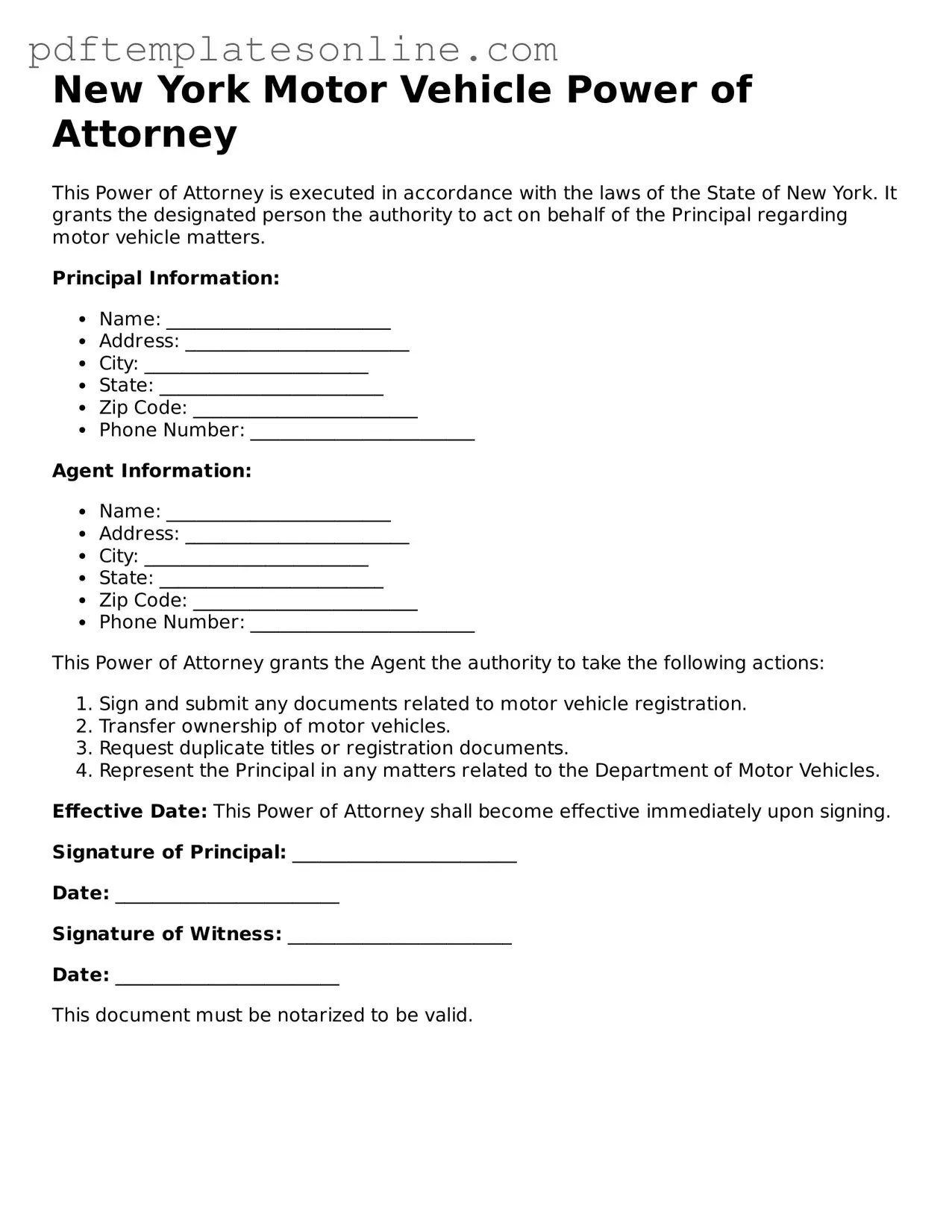Filling out the New York Motor Vehicle Power of Attorney form can be a straightforward process, but many individuals make common mistakes that can lead to delays or complications. One frequent error is failing to provide accurate information about the vehicle. It’s essential to double-check the Vehicle Identification Number (VIN), make, model, and year. A simple typo can create significant issues down the line.
Another common mistake is not signing the form correctly. The Power of Attorney requires the signature of the person granting authority. If this signature is missing or does not match the name provided elsewhere on the form, it can render the document invalid. Always ensure that the signature is clear and matches the name as it appears on official identification.
Many people overlook the importance of having the form notarized. In New York, notarization is often a required step to ensure the document is legally binding. Failing to have the Power of Attorney notarized can lead to rejection by the Department of Motor Vehicles (DMV). It’s a simple step that can save a lot of time and hassle.
Another mistake involves not specifying the powers granted to the agent. The form allows for a range of powers, from transferring title to registering the vehicle. If the powers are not clearly defined, it may lead to confusion or misinterpretation. Make sure to outline exactly what authority you are granting to avoid any misunderstandings.
People also tend to forget to include the date on the form. While it may seem minor, the date is crucial for establishing the validity period of the Power of Attorney. Without a date, the DMV may question the document’s authenticity or its intended duration, leading to potential complications.
Finally, individuals often neglect to keep a copy of the completed form for their records. Once the Power of Attorney is submitted to the DMV, having a personal copy can be invaluable for reference. It serves as a reminder of the powers granted and can help resolve any issues that may arise later. Always make sure to retain a copy for your own peace of mind.
